Text
Blog #3: Brema Brema, a versatile creative
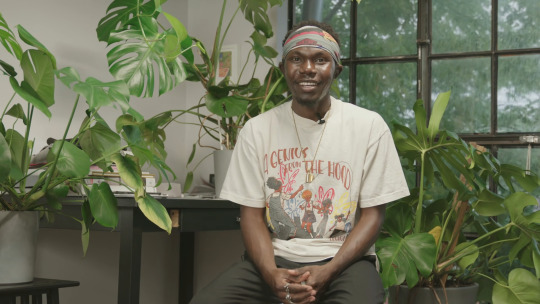
For my final blog post, I wanted to talk about an artist and visionary close to home; Brema Brema. He is known for founding the clothing and lifestyle brand “Unfinished Legacy”, which he started in good old Milwaukee, Wisconsin. Brema was born and raised in Sudan up until age five, where war-like conditions caused his family to flee to a Kenyan refugee camp. They later settled in Milwaukee in 2010. Growing up, Brema used skateboarding, street art and photography as his creative outlet and began interning at the Milwaukee Art Museum. One day, the staff were asked to describe themselves with one word, and one intern answered saying “unfinished”. This response resonated with Brema, it spoke to him about where he’s at now and the journey ahead of him. This epiphany influenced him to start his brand and its ethos. The concept behind an “unfinished legacy” makes you think about everything that has led you up to today and your potential of what still lies ahead. It kind of reminds me of when Kobe Bryant said “jobs not finished”, it has the same spirit. It encourages people to keep pushing forward, your legacy being “unfinished” to promote continued growth and being the best version of yourself.
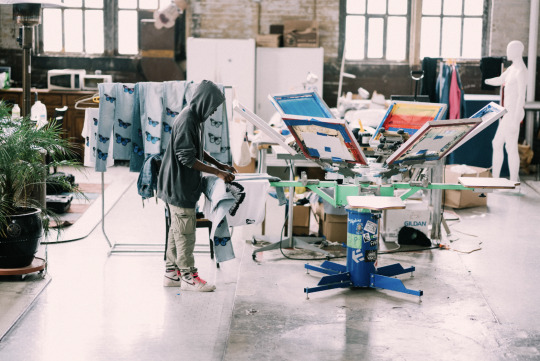
I had first heard of Brema around 2018 when he came to my high school to give a presentation of his career. At this time he was a part of a creative media group called MKE Misfits, and was screen printing for Unfinished Legacy in his basement. The garments would consist of bright, vibrant colors with the brand logo, the iconic UL butterfly or “Milwaukee” printed on jeans, t-shirts and flannels. The butterfly ended up becoming a staple of the brand ethos and message. An interview with Vogue has Brema explain the importance of the butterfly, where he says “they represent migration, which fit my upbringing perfectly” and that “butterflies can’t see their wings or how truly beautiful they are, but everyone else can”. He followed by saying “I never realized my true potential and value in the world, It’s something I’ve struggled with as I continue to grow. Other people saw my talents and potential before I could.” These ideas align with Bremas story in a special way which he used to build the message behind the brand. The Vogue interview came about after Brema got some light shined on him for his “Black Lives Matter” tees, featuring the quote with butterflies around it, symbolizing hope. He would hand these tees out to protestors during the BLM movement in 2020 and sold some with proceeds going to a local youth organization True Skool.

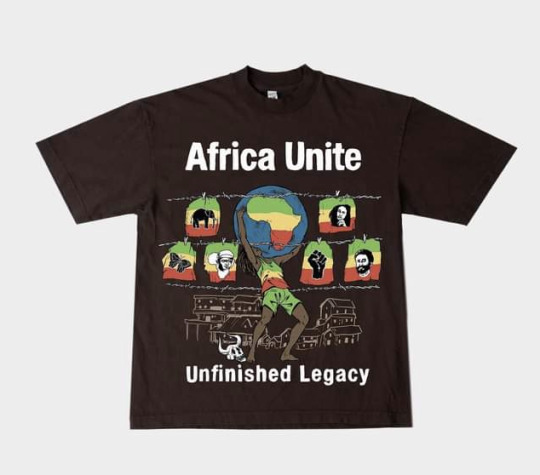
There is truly no one else in the city that has made moves and an influence like Brema has. I would even consider Unfinished Legacy to be the most successful streetwear and lifestyle brand that has come out of Milwaukee. Bremas’ art relates very closely to the Harlem Renaissance, a time where African Americans blossomed in Harlem through art mediums just like Brema demonstrates. Brema uses art, visual media, music and the community built behind the brand to tell his story and create an influence on the city and rest of the world. Besides the butterfly, Unfinished Legacy showcases the power of the black experience through positive messages and graphics, adding to the central theme of hope.

Some of these graphics include full print t-shirts of black icons; such as Bob Marley, Tupac Shakur, Basquiat, and Muhammad Ali, who’s stories relate to the brands message, and the“A Genius From The Hood'' graphic and Black History collection. To add to community influence, Brema would frequently hold pop ups at skate shops and streetwear stores in Milwaukee, New York and Los Angeles with his collection for sale and a screen print workshop where you can screenprint your own Unfinished Legacy tee. You can also find plenty of tutorials on his YouTube channel which guides you through everything you need to know to start your own clothing brand and production.
youtube
This year, after previously living in Los Angeles for a couple years, Brema moved back to Milwaukee and opened the flagship store for Unfinished Legacy where it all started. The store showcases everything the brand is about and also serves as a creative hub, where art exhibits and creative gatherings occur to foster a growing community in the city.
instagram
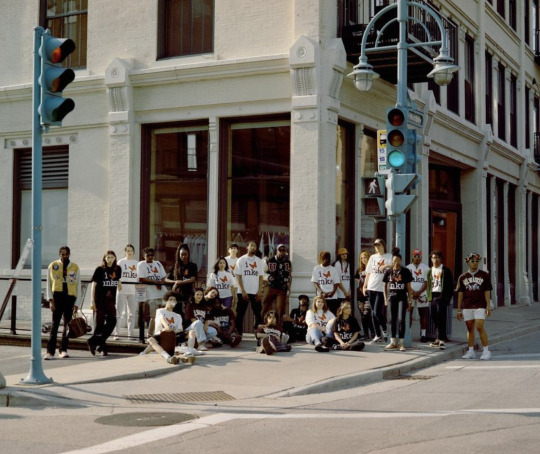
Just like the brand name says, Brema's work is unfinished. He is constantly learning and growing to reach his highest potential and influences a lifestyle for others to do so as well.
instagram
instagram
UL Instagram: https://www.instagram.com/unfinishedlegacy/
Brema Brema Instagram: https://www.instagram.com/brema__brema/
Vogue Article: https://www.vogue.com/slideshow/brema-unfinished-legacy
1 note
·
View note
Text
Blog #2 - Sorry To Bother You (2018)

“Sorry To Bother You” is a satirical dark comedy film written and directed by Boots Riley. It follows Cassius Green, a low-class black man that takes up a telemarketing job and learns about a hack that helps him climb through the corporate ladder. Through his rise, he experiences privileges of the upper class and becomes caught up in a bizarre corporate conspiracy. The film serves as a commentary on racial and social identity, class division, capitalism, exploitation, and dehumanization in contemporary America through satire and unconventional storytelling. In this post, I’m going to dive into the concepts the film portrayed and how they connect to the material in the class.

Cassius’ journey in the telemarketing world starts at an interview, where he brings fake trophies and plaques to convince them of a hard-working character. Off jump, this small scene showcases the need for black people to prove themselves worthy compared to white people at the same or lower skillset. His first couple days on the job are rough and he finds no success, until a desk neighbor named Langston informs him that he has to use his “white-voice”. Langston describes this voice as “sounding like you don’t have a care” or “someone who got their bills paid, is happy about their future and are gonna jump in their sports car after the call” and when enacting it to the audience for the first time, it sounds exactly like the voice on those corny infomercials you would see on TV. He pretty much says the “white voice” embodies success while the “black voice” doesn’t. When a telemarketer makes a call to a potential customer, the film illustrates the telemarketer teleporting to the customers as if they were talking to them in person. When they use the white voice, the customers were more attentive and likely to be sold, not realizing they are actually talking to a person of color. The “white voice” concept raises the question of what “race” is and demonstrates how it’s more of a societal construct if people of color can use the white voice as a front to get your business, relating to Dyer’s readings of how whiteness functions as a position of power.

Cassius finds success with this method and gets promoted at a rapid rate, eventually landing him a spot in the corporate office. This is where he starts seeing better treatment being part of the upper class, but loses his identity and morals in doing so. As soon as he steps foot in the corporate building, he is greeted by a black man using white voice named “Mr. ____” where he is told immediately that it’s “white voices only in this building”. As Mr. ____ gives Cassius a tour, he explains that this branch sells “power”, which is later revealed to be selling slave labor to other countries on behalf of their biggest client “WorryFree”. Cassius is morally hesitant at first, using his real voice to express concern, but after being shown the starting salary, he switches back to his white voice enthusiastically saying “well I’m gonna have to get me some new suits!”.

Cassius having to suppress his true identity to achieve success reminds me about the teachings in class from Karin Higa's “Toyo Miyatake and ‘Our World’” regarding the "Hyper-Americanism" Japanese-American people felt to achieve in order to get accepted by their surroundings and having to sacrifice their identity in doing so, just like Cassius does to feel successful in his new surroundings. The clip below illustrates this concept perfectly. Cassius settles in his new office and brings out a picture of his dad. He used to hang up this picture by his side, but after turning corporate, he puts it up behind him, as if he's putting his black identity behind him before making a sales call.
The rest of the movie shows Cassius diving deeper into the corporate rabbit hole, as he experiences the surreal nature of the upper class and slowly loses his humanity. When at the top, he finds out that WorryFree plans to turn laborers into horse-like humans for enhanced labor production, snapping him out of the hole he's dug himself into. This is where the themes of labor exploitation and its surreal future come in hand and further touches on the sacrifices of identity and humanity Cassius endures.

The film is a great example of how visual media can be used to address the social and economic issues still prevalent today. The director Boots Riley was able to convey an unconventional story with colorful visuals and subtle metaphors that show how someone’s racial identity and sense of humanity can be challenged if it were to mean receiving success. I see Boots Riley’s film adjacent to Basquiat’s art, both were eccentric and would challenge the viewers to what it says about the current state of the socioeconomic factors in today's world. I highly recommend this film to anyone who takes this class, as its peculiar approach to its message is unlike any other work I’ve seen related to this commentary.


1 note
·
View note
Text
Blog #1 - Atlanta (2016-2023)

“Atlanta” is a TV show created by multifaceted artist Donald Glover. It follows the journey of a college dropout who starts managing his cousin; an upcoming rapper who goes by “Paper Boi”. As their journey unfolds, the group navigates through social and economic obstacles relating to racism, poverty, and class in a drama storyline with hints of deadpan comedy. The show serves as a commentary on these issues, while creating humor in surreal moments and “what-if” scenarios that offer perspective. A couple episodes with these scenarios include if Justin Bieber was black, a black man who identifies as a “trans-racial white man”, and a biracial student trying to prove his “blackness” through stereotypes for a full scholarship. Virtually everything the characters go through seems like a joke on the surface, but you are being shown a deeper perspective on how societal factors of race and class serve as obstacles to some and advantages to others. The video link below provides a comical scene where Paper Boi is being berated by illogical accusations and stereotypes because of his "background".
youtube
Atlanta’s third season introduces a completely new atmosphere by introducing four stand-alone episodes with one-off characters facing similar themes. When first reading “On The Matter of Whiteness” by Richard Dyer, I was immediately reminded about this season and how they tackled the topic of whiteness. The episode “three slaps” starts off following a white man and black man fishing on an eerie lake at night. They start talking about the creepy atmosphere and the white man explains why; the lake used to be a self-governed black town that was later flooded by the state government and that their souls are haunting the lake (this implies to the story behind Lake Lanier). He then murmurs that they were “almost white”. The black man questions him on what he meant by that, where he replies with “white isn’t a real thing, some people just become white” and that "white" is a social concept with no scientific basis. He brings up how the Chattahoochee river was dammed and the people living there refused to leave because they thought they were safe and “paid to be white”, leaving the other man speechless. He ends off by saying “White is when you are, where you are. With enough blood or money anyone can be white. The thing about being white is, it blinds you. It's easy to see the black man as cursed because you’ve separated yourself from him, but you don’t know you’re enslaved just like him”. The ideas reflect very closely to Dyer’s writings of how whiteness functions as a position of privilege and power, how “white” has been shaped as a social construct, and the “blindness” that comes with being white.
*clips from Season 3 that tackle the topic of whiteness
The fourth episode of the season titled “The Big Payback'' follows a scenario where many black people start suing certain white people who had ancestry linked to slave owners who enslaved their forebears. We see this happen to Marshall, a white man being a victim of this epidemic by getting sued by a black woman he doesn’t know. As a result, he loses his family and home and ends up staying at a hotel. He stumbles across another white man named “E”, the same man from the previous episode, who is in the same situation. Marshall starts venting to him about what he lost, how he “didn’t do anything” and that they “don’t deserve this”, and E challenges him by asking “what do THEY (black people) deserve?”. Before Marshall can respond, E tells him “slavery is not past, it is a cruel, unavoidable ghost that haunts them in ways we can’t see”. He brings up Marshall’s situation where his daughter will have to grow up without a father and make a name for herself from the ground up, just like they (white people) did to them (black people). As Marshall comes to terms with his future, E reassures him by saying everything will be okay because “the curse they were running from has been lifted” and that they’re free. The episode ends with Marshall working in a fancy restaurant where part of his salary goes towards the woman suing him. As he serves a table, it’s revealed that the waiting staff is dominantly white with the diners being exclusively people of color. This episode relates to concepts covered by Peggy McIntosh’s “White Privilege, Unpacking the Invisible Knapsack” which sets out to paint the invisible privileges white people benefit from without realizing it. The plot of this episode made some of those privileges aware to Marshall, one of them being that he doesn’t have to carry the trauma black people carry related to slavery and treatment of their people. Even though he didn’t “do anything” to that woman, he doesn’t see or feel the pain that she carries. This episode brings up a hypothetical scenario with results that would change the definition of class and make white people consider the “blessing" and "curse” of whiteness.
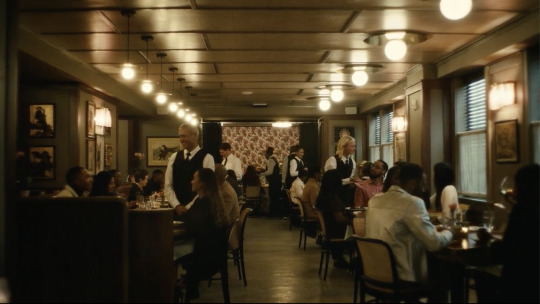
*ending of S3E4, showing a full white staff serving primarily people of color in a fancy restaurant
2 notes
·
View notes